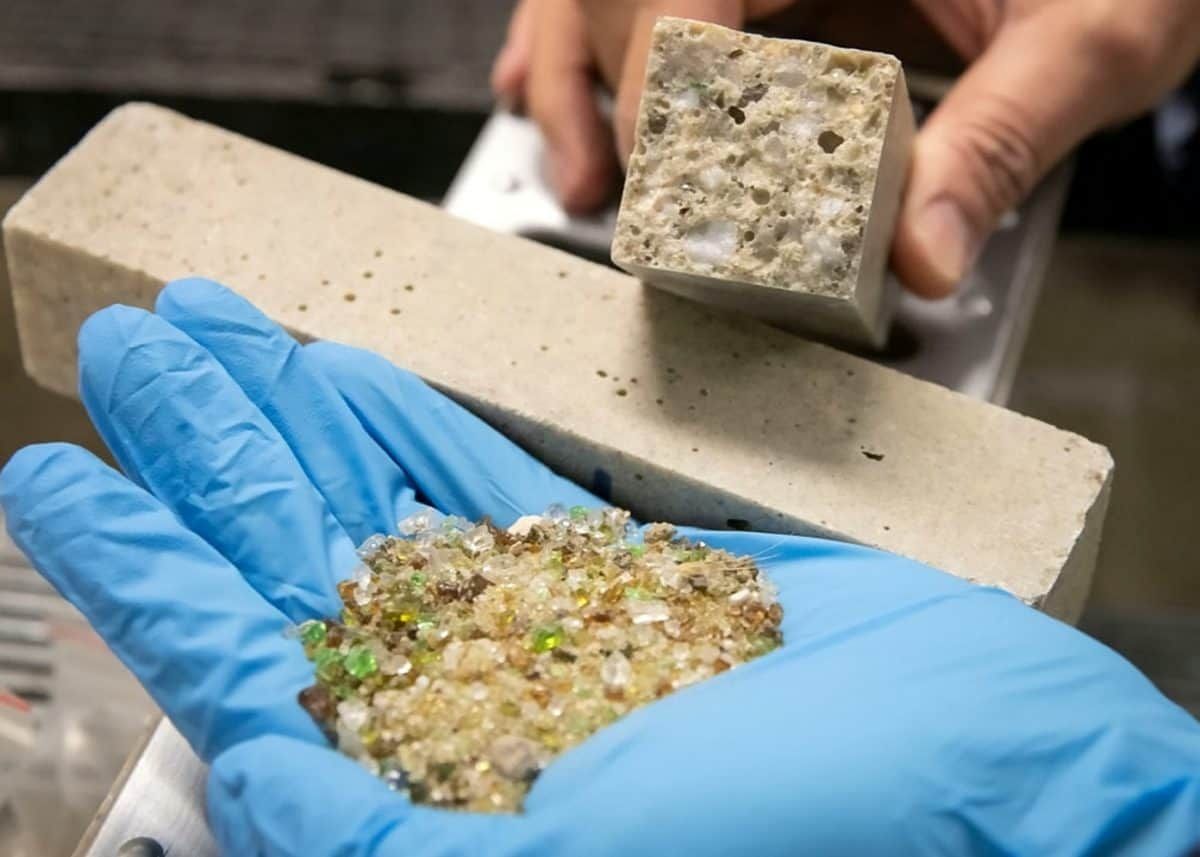Researchers have discovered how to make concrete from recycled glass – by turning it back into sand.
A team from Australia were able to turn the waste into a replacement for industrial flooring – which opens the door for new uses for old glass.
They discovered ground glass can be used to make polymer concrete, a material used for roads and car parks.
Lecturer Dr Riyadh Al-Ameri, from the Deakin School of Engineering, Victoria, said the invention was “a potential substitute” for regular sand in concrete.
He said: “This research provides the evidence the construction industry needs to see the potential of glass as a substitute for sand when making polymer concrete and, potentially, concrete.”
Polymer concrete is a type of concrete that uses polymers, typically resins, to replace lime-type cement as a binder.
Dr Al-Ameri said: “Worldwide, the construction industry represents six per cent of global GDP, according to the World Economic Forum.
“Concrete is a major construction material and sand is one of its primary components, so finding an alternative to sand makes good economic sense.
“Mined sand requires washing and grading before it is added to aggregate, cement and water to make concrete.
“We have found that substituting sand with ground recycled glass makes the polymer concrete stronger and is a sustainable use of one of the major types of recyclables in the domestic waste stream.

“Any changes that reduce the cost of production will lead to significant gains across the industry, potentially on a global scale.”
Polymer produces a high strength, water-resistant material suited to areas with heavy traffic such as service stations and airports.
Engineering student Dikshit Modgil worked with Melbourne-based Orca Civil Products as part of his Master’s research.
Orca Civil Products Director Alan Travers said the partnership produced results useful in taking the concept further to commercialisation.
He said: “The specific type of waste glass used in this project was unsuitable for recycling back into glass and the amount that is stockpiling is becoming a community problem.
“The concept has even more appeal to us because of predicted shortages of natural, mined sands in the medium term.”
Dr Al-Ameri added the next stage of their research would look at substitutes for the aggregate in polymer concrete, optimising the substitution rate, assessing durability, and the commercialisation of the new product.

